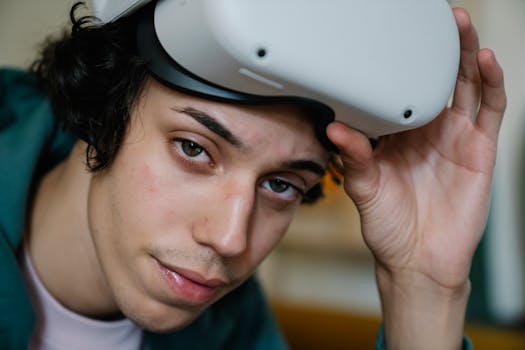Virtual Reality Workspaces: The Future of Distraction-Free Productivity
Imagine a workspace where distractions are non-existent, productivity is at its peak, and the limitations of a physical office are a thing of the past. This is the promise of virtual reality (VR) workspaces, a technology that is rapidly transforming our approach to work and redefining productivity norms. As we explore this emerging trend, it's clear that VR workspaces are not just a sci-fi fantasy, but an imminent reality poised to usher in a new era in our professional lives.

So, what exactly are VR workspaces? Essentially, they are digital environments created using VR technology, where individuals can perform their professional tasks. These spaces can be custom-designed to suit individual needs and preferences, eliminating background noise and interruptions that often plague traditional work environments. With VR headsets and compatible devices, users can interact with these digital spaces as if they were physical locations, providing an immersive experience that promotes focus and efficiency.
The question then arises: How do VR workspaces enhance productivity? The answer lies in their ability to create distraction-free environments. In traditional offices, productivity often suffers due to interruptions from colleagues, background noise, or simply the discomfort of the physical space. VR workspaces eliminate these issues by providing a controlled environment where workers can focus solely on their tasks. Moreover, these spaces can be customized to each worker's preference, further enhancing comfort and concentration.
Additionally, VR workspaces offer unprecedented flexibility. With no geographical constraints, employees can work from anywhere in the world without sacrificing collaboration or communication. This not only reduces commuting time and costs but also allows businesses to tap into talent from across the globe. Furthermore, VR technology enables real-time collaboration in the virtual space, making remote teamwork seamless and efficient.
Despite these advantages, there are valid concerns about VR workspaces. For instance, prolonged use of VR devices can lead to physical discomfort or health issues such as eye strain or motion sickness. There are also questions about data security in the virtual space, and the potential for isolation given the lack of face-to-face interaction. However, as technology advances, solutions to these issues are being developed, making VR workspaces a viable option for many businesses.
The potential of VR workspaces is vast and largely untapped. As technology continues to evolve, these digital environments will become more sophisticated, offering even greater benefits for businesses and their employees. While challenges exist, they are not insurmountable, and the advantages of VR workspaces far outweigh the potential drawbacks.
In the realm of productivity and efficiency, VR workspaces represent a significant leap forward. They offer a solution to many of the issues plaguing traditional work environments while providing unprecedented flexibility and convenience. As we navigate this new era in our professional lives, it's clear that VR workspaces are more than just a trend—they're the future of work.
As we look ahead, it's evident that VR workspaces are set to redefine our professional landscape. They promise a future where distraction-free productivity is the norm rather than the exception. While this technology is still evolving, its potential is undeniable. With continued innovation and adoption, VR workspaces could revolutionize not just how we work, but also how we think about productivity and collaboration in the professional sphere. The future of distraction-free productivity is here, and it's virtual.